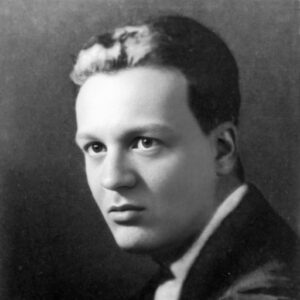
Stanley Grauman Weinbaum was born on May 1, 1902, in Milwaukee, Wisconsin. His life, though tragically short, burned with an intensity that continues to illuminate the landscape of science fiction. Stanley Grauman Weinbaum erupted onto the science fiction scene like a geyser from unexpected depths: sudden, brilliant, and gone too soon.
Weinbaum’s early life was marked by a restless spirit and an almost obsessive fascination with the natural world. He wasn’t content merely observing nature—he sought to understand its underlying principles, to dissect its beauty into component parts, then reassemble it in ways that challenged perception. This impulse would later define his writing. He attempted various careers—from glove manufacturing to trapping—but none could contain the teeming worlds forming inside him.
The early 1930s saw Weinbaum explode onto the science fiction scene with an unprecedented burst of creativity. Before “space opera” had fully solidified into a genre, before Asimov’s robots and Clarke’s monoliths, there was Weinbaum. He didn’t simply write about alien worlds; he inhabited them. His stories weren’t about conquest or technological superiority, but about genuine encounter—the struggle to understand, to communicate, even to empathize with beings utterly unlike ourselves.
One of his most celebrated works, “A Martian Odyssey,” published in 1934, remains a cornerstone of the field. It introduced readers to Tweel, a silicon-based lifeform whose very existence defied terrestrial logic. The story wasn’t just about a man lost on Mars; it was about the limitations of human perception and the breathtaking possibilities of alien intelligence. The narrative’s focus on first contact as an act of mutual discovery, rather than domination, was revolutionary for its time.
Compared to his contemporaries, Weinbaum stood apart. Where writers like Edmond Hamilton often focused on grand scale adventure and heroic figures, Weinbaum’s strength lay in the intimate details of alien ecosystems and the psychological impact of encountering the unknown. H.P. Lovecraft, another prominent author of the era, explored cosmic horror through dread and isolation; Weinbaum, conversely, sought wonder and connection even within the strangest landscapes. Unlike Lovecraft’s dense, gothic dread, Weinbaum’s prose shimmered with clarity, inviting readers into the unknown. He was less concerned with evoking fear than with sparking curiosity.
Weinbaum’s style is often described as “biological,” reflecting his deep understanding of natural systems. He populated his stories not just with creatures, but with entire ecologies—complex webs of life interacting in believable and fascinating ways. This attention to detail, coupled with a lyrical quality that hinted at the profound mysteries underlying existence, set him apart. He didn’t simply tell you about an alien world; he allowed it to unfold before your senses, a vibrant tapestry woven from imagination and scientific curiosity.
Sadly, Weinbaum’s prolific career was cut short by his death in 1935 at the age of thirty-three. Though his pen was stilled far too early, the impact of his brief but brilliant output continues to resonate. He didn’t just write science fiction; he expanded its boundaries, challenging readers to reconsider their place in a universe teeming with possibilities. He left behind not merely stories, but blueprints for imagining worlds beyond our own—worlds that continue to inspire and captivate generations of writers and dreamers alike.